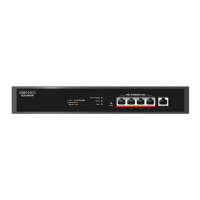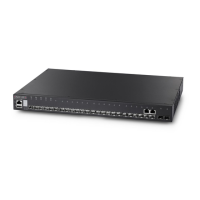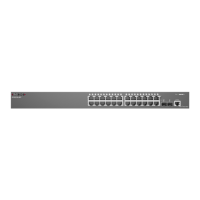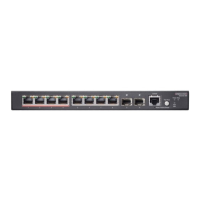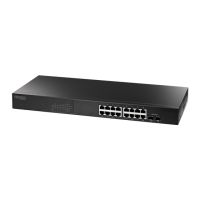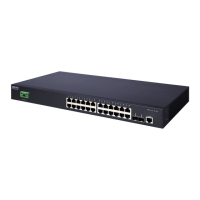C
HAPTER
8
| Spanning Tree Algorithm
Configuring Loopback Detection
– 206 –
CONFIGURING LOOPBACK DETECTION
Use the Spanning Tree > Loopback Detection page to configure loopback
detection on an interface. When loopback detection is enabled and a port
or trunk receives it’s own BPDU, the detection agent drops the loopback
BPDU, sends an SNMP trap, and places the interface in discarding mode.
This loopback state can be released manually or automatically. If the
interface is configured for automatic loopback release, then the port will
only be returned to the forwarding state if one of the following conditions is
satisfied:
◆ The interface receives any other BPDU except for it’s own, or;
◆ The interfaces’s link status changes to link down and then link up again,
or;
◆ The interface ceases to receive it’s own BPDUs in a forward delay
interval.
N
OTE
:
If loopback detection is not enabled and an interface receives it's
own BPDU, then the interface will drop the loopback BPDU according to
IEEE Standard 802.1w-2001 9.3.4 (Note 1).
N
OTE
:
Loopback detection will not be active if Spanning Tree is disabled on
the switch.
N
OTE
:
When configured for manual release mode, then a link down/up
event will not release the port from the discarding state.
CLI REFERENCES
◆ "Spanning Tree Commands" on page 795
PARAMETERS
These parameters are displayed:
◆ Interface – Displays a list of ports or trunks.
◆ Status – Enables loopback detection on this interface.
(Default: Enabled)
◆ Trap – Enables SNMP trap notification for loopback events on this
interface. (Default: Disabled)
◆ Shutdown Interval – The duration to shut down the interface.
(Range: 30-86400 seconds; Default: 300 seconds)
If an interface is shut down due to a detected loopback, and the release
mode is set to “Auto,” the selected interface will be automatically
enabled when the shutdown interval has expired.
If an interface is shut down due to a detected loopback, and the release
mode is set to “Manual,” the interface can be re-enabled using the
Release button.
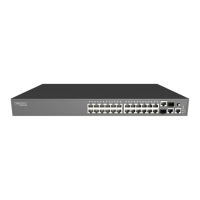
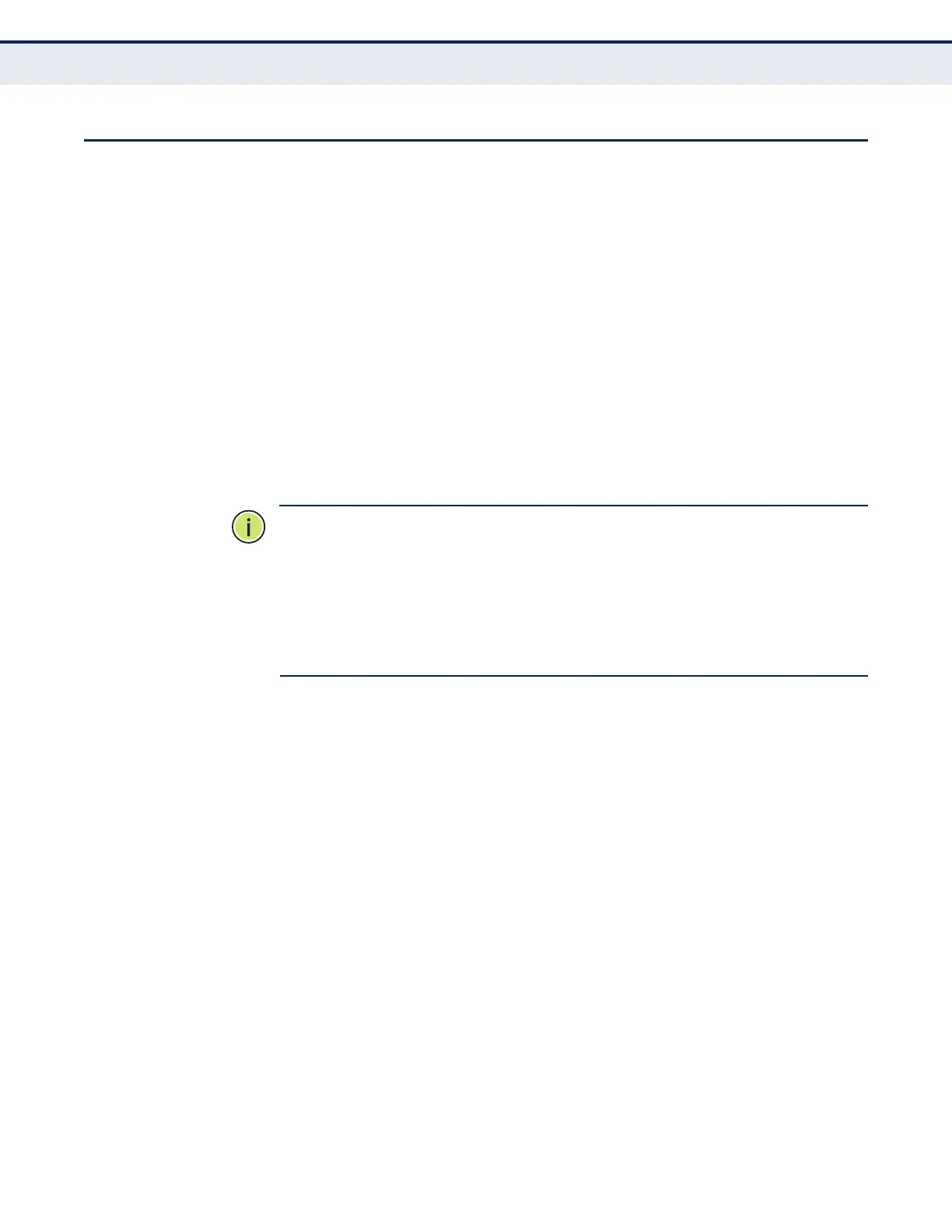